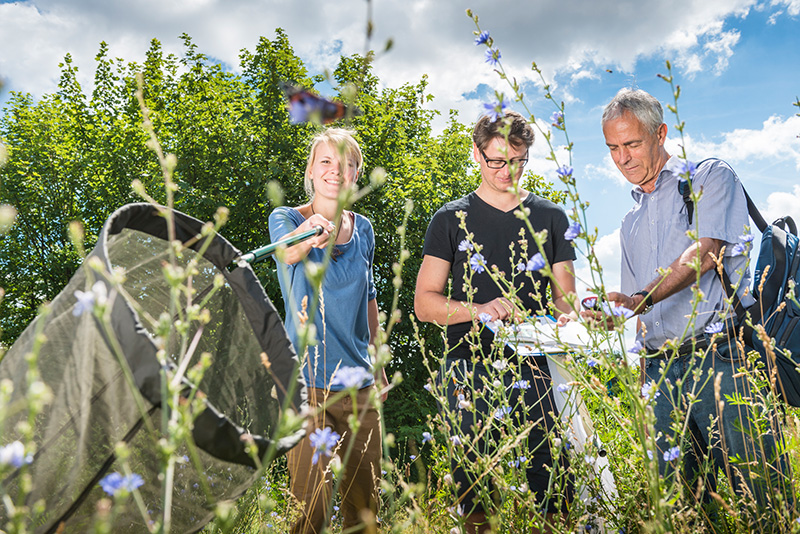Project Description
The Butterfly Monitoring Germany (TMD) - A population census for butterflies
Although butterflies are very well studied we still do not know enough about the national population status and trends of the 146 native non-alpine species. In many cases we can only guess the reasons for a decline or we don’t even notice their extinction. The same applies for species extending their ranges or new colonizers. A nationwide, regular butterfly monitoring scheme can help to improve our knowledge about population trends and the resulting data constitute a sound basis for further research and conservation projects.
Butterflies have an extremely positive public image and therefore many people are willing to join citizen science projects like the ”Butterfly Monitoring Germany“. In the UK, butterfly lovers count butterflies already since 1976. In the meantime, the standardised UK butterfly monitoring scheme has been transferred to 17 other European countries. In Germany, a butterfly monitoring started in 2001 in the federal state of North-Rhine-Westphalia (organised by the German Nature and Biodiversity Conservation Union – NABU). Since 2005 butterfly monitoring in Germany is performed nationwide – with now approx. 500 volunteers all over the country. The standardised methodology allows for the comparison of trends with other countries and the joint analyses of data on a European scale.
The initiative for the start of the ”Butterfly Monitoring Germany“ came from the Helmholtz-Centre for Environmental Research – UFZ, which coordinates the TMD in close cooperation with the Society for Butterfly Conservation (GfS). The aim is to learn more about the situation of butterflies in Germany. Which species decline, which ones are extending their ranges and how does the status of our national biodiversity change?
The continuous work of our many volunteers leads to large datasets which enable us to assess the situation of many species for the first time, and sometimes provide new knowledge about their biology and ecology. Due to the high dynamics of insect populations reliable trends can only be calculated after a period of many years. Such long-term studies are very rare because they are both difficult to organise and to finance. The success of TMD depends on the continuous help of our many volunteers!


